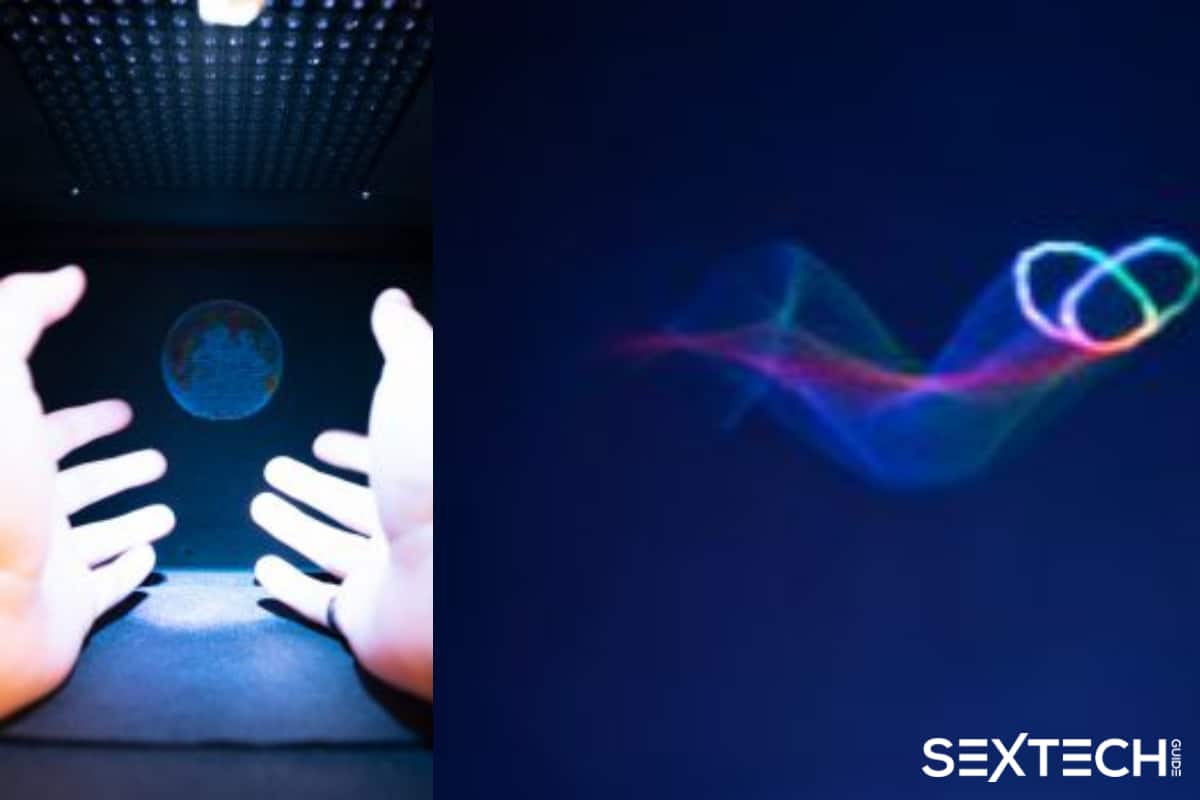While current digital experiences are as immersive as the current gen technology allows, there’s still a notable absence of anything resembling tactile feedback, but it’s an area that researchers have been looking at for a long time, often through the use of ultrasound.
Most recently, a team from the University of Sussex, led by Dr. Ryuji Hirayama uses a single scanning point of light to project a moving image, and combines it with ultrasound, which creates a sensation of being touched.
“Our new technology takes inspiration from old TVs which use a single colour beam scanning along the screen so quickly that your brain registers it as a single image,” Hirayama says. “Our prototype does the same using a coloured particle that can move so quickly anywhere in 3D space that the naked eye sees a volumetric image in mid-air”.
The idea of a scan-point of light has been around for a long time – but where does the ultrasound come into it?
“Even if not audible to us, ultrasound is still a mechanical wave and it carries energy through the air,” Dr. Diego Martinez Placencia, one of Hirayama’s colleagues on the project, says. “Our prototype directs and focuses this energy, which can then stimulate your ears for audio, or stimulate your skin to feel content.”
Although not specifically aimed at the sex industry, the idea that it could be applied this way was fairly obvious from the outset – proving once again that the sex industry will always be one step ahead of other consumer markets, and that tactile experiences with avatars that can respond to touch can be conjured up without the need for a VR headset or sex robot.
The obvious advantage of holograms is that, rather than a generic sex doll, you can now engage in virtual fantasties with exactly who you want to – be they an unrequited love, the ex that got away, or someone off your ‘freebie list’ that you never really believed you’d get the chance to get that close to.
As ever with sex surrogates, the debate will rage over whether this sort of fantasy fulfilment is a legitimate outlet for carnal desires, or if it desensitises users to what is, in effect, a form of virtual rape from the moment you use an existing person’s identity.
This is by no means a new attempt at touchable holograms, however – researchers have been attempting to use similar methods since at least 2009, as shown in the video above. There still haven’t been any particularly notable consumer examples of it though.
Read Next: Holodexxx lets you interact with an AI version of your favourite porn stars in VR






Leave a Reply